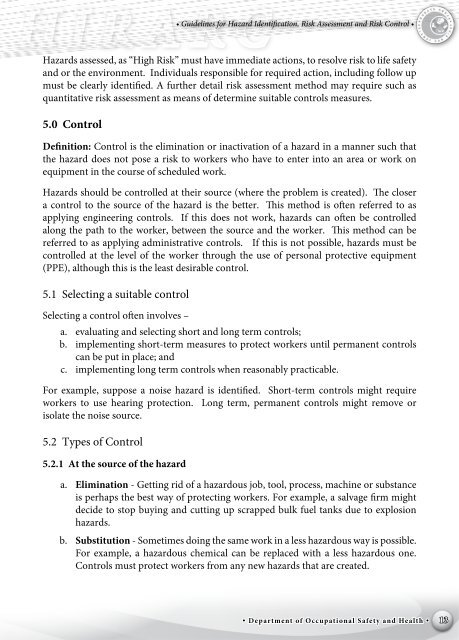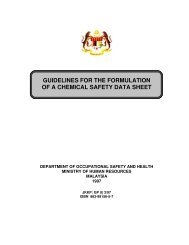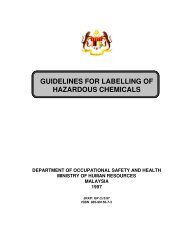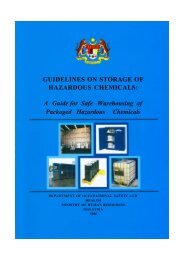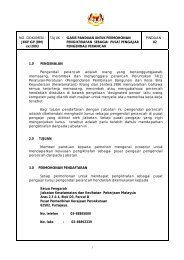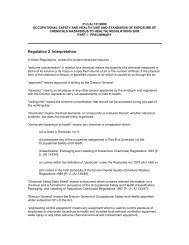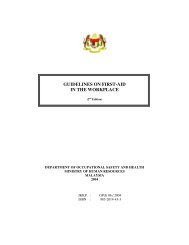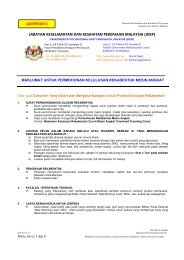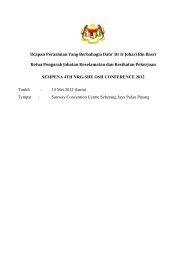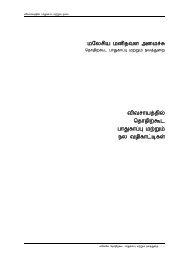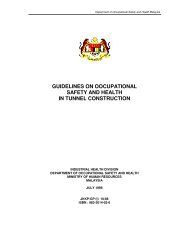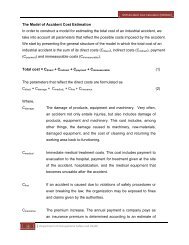(HIRARC), 2008 - Dosh
(HIRARC), 2008 - Dosh
(HIRARC), 2008 - Dosh
- No tags were found...
You also want an ePaper? Increase the reach of your titles
YUMPU automatically turns print PDFs into web optimized ePapers that Google loves.
<strong>HIRARC</strong>• Guidelines for Hazard Identification, Risk Assessment and Risk Control •Hazards assessed, as “High Risk” must have immediate actions, to resolve risk to life safetyand or the environment. Individuals responsible for required action, including follow upmust be clearly identified. A further detail risk assessment method may require such asquantitative risk assessment as means of determine suitable controls measures.5.0 ControlDefinition: Control is the elimination or inactivation of a hazard in a manner such thatthe hazard does not pose a risk to workers who have to enter into an area or work onequipment in the course of scheduled work.Hazards should be controlled at their source (where the problem is created). The closera control to the source of the hazard is the better. This method is often referred to asapplying engineering controls. If this does not work, hazards can often be controlledalong the path to the worker, between the source and the worker. This method can bereferred to as applying administrative controls. If this is not possible, hazards must becontrolled at the level of the worker through the use of personal protective equipment(PPE), although this is the least desirable control.5.1 Selecting a suitable controlSelecting a control often involves –a. evaluating and selecting short and long term controls;b. implementing short-term measures to protect workers until permanent controlscan be put in place; andc. implementing long term controls when reasonably practicable.For example, suppose a noise hazard is identified. Short-term controls might requireworkers to use hearing protection. Long term, permanent controls might remove orisolate the noise source.5.2 Types of Control5.2.1 At the source of the hazarda. Elimination - Getting rid of a hazardous job, tool, process, machine or substanceis perhaps the best way of protecting workers. For example, a salvage firm mightdecide to stop buying and cutting up scrapped bulk fuel tanks due to explosionhazards.b. Substitution - Sometimes doing the same work in a less hazardous way is possible.For example, a hazardous chemical can be replaced with a less hazardous one.Controls must protect workers from any new hazards that are created.• Department of Occupational Safety and Health •13


